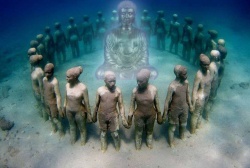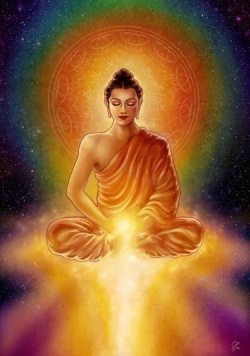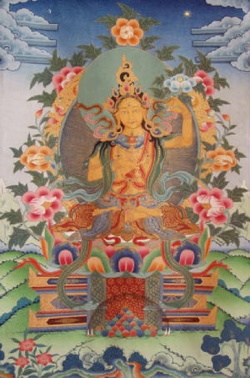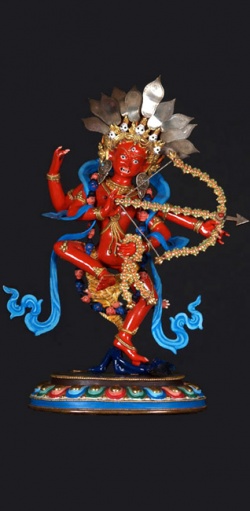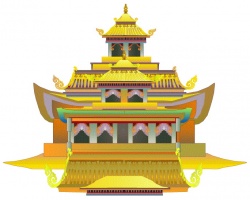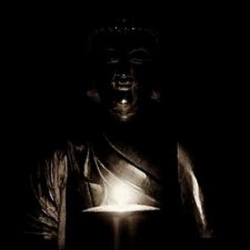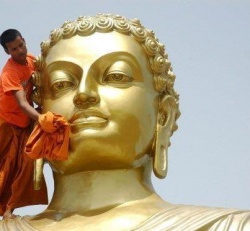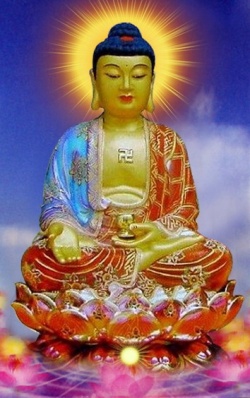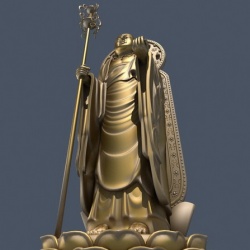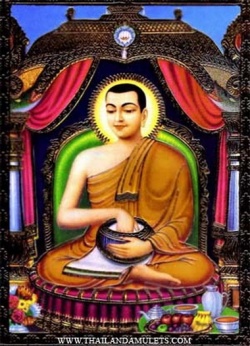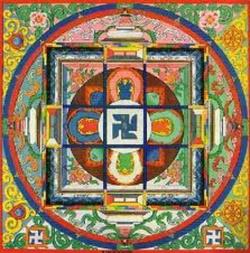Difference between revisions of "Buddhist morality is Medieval"
| Line 1: | Line 1: | ||
| − | <nomobile>{{DisplayImages|106|3929|4244|3489|1218|1426|744|9|423|1420|3716|1025|1668|1382|3574|1288|3862 | + | <nomobile>{{DisplayImages|106|3929|4244|3489|1218|1426|744|9|423|1420|3716|1025|1668|1382|3574|1288|3862}}</nomobile> |
Latest revision as of 16:21, 21 March 2016
Traditional Buddhist morality developed in feudal theocratic cultures. Mostly, it is typical for such societies: similar to what you’d find in Medieval Europe or the nastier parts of the contemporary Islamic world. It is crude, arbitrary, patriarchal, and often cruel.
In Europe, Enlightenment rationalism enabled smart people to say “wait, that’s nasty and stupid.” Christian morality gradually became less barbarous, and evolved into secular ethics.
Buddhist modernizers replaced traditional morality with Victorian Christian morality in the late 1800s, and with leftish secular morality in the the 1980s. (The two pages after this one discuss that.) The result is that modern “Buddhist ethics” has no similarity to traditional Buddhist morality, much of which would horrify Western Buddhists.
You’d find, for most current hot-button Western moral conflicts, that traditional Buddhism has nothing to say, or comes down on the side of Western conservatives, or advocates positions so regressive that even no conservative would agree. Damien Keown, in “Buddhist ethics: a critique,”1 writes:
Buddhism is depicted as holding ‘enlightened’ views on any number of contemporary issues, when these have hardly been mentioned in traditional sources, or the evidence is ambiguous or even points in the opposite direction.
Thus Buddhism is depicted as eco-friendly, a defender of individual rights, strongly anti-war, ‘pro-choice’ and tolerant of same-sex relationships, in a manner that coincides neatly with modern and liberal agendas.
This anachronistic construction of Buddhism seems to owe as much to the rejection of certain traditional Western values as it does to the views of Buddhism itself. If Buddhism is the ‘good guy,’ it is not hard to image who the ‘bad guy’ is.
The blame for many of today’s problems is often laid at the door of Christianity, which is charged with being destructive of the environment, conservative, authoritarian, repressive, sexist, and stained in the blood of countless wars.
However, the Buddhist position is much less clear and coherent on many issues than is commonly supposed.
I will illustrate the nature of the problem with three examples: ecology, human rights, and war.
These are all issues on which Buddhism is widely perceived as being on the side of the angels, but the justification for this view in Buddhist teachings is weaker than might be thought.
I’ll go through two of Keown’s examples briefly, plus three others: sex, gender, and slavery.
Buddhism is extraordinarily anti-sexual.
Rejection of sex is the first and most important aspect of its central principle, renunciation.
Buddhism recommends complete celibacy for lay people as well as monastics. Actual Buddhist practice is completely incompatible with any sexual activity, and even with the slightest twinge of desire.3
For lay people who insist on having sex anyway, Buddhism has long lists of rules prohibiting most sexual acts.
If you follow the rules, you’ll probably be reborn as a pig, but at least you’ll avoid hell.
Details depend on the tradition, but commonly verboten are solo and partner masturbation, oral and anal sex, sex between men, sex during daytime, and sex with a woman who is pregnant or nursing.
Abortion is murder, and sends you straight to hell.
On the other hand, polygamy is taken for granted, and married men having sex with prostitutes is explicitly OK according to some (not all) major traditions.4 Overall, and in other respects too, Buddhist morality is patriarchal, sexist, and cis-sexist.5
José Cabezón’s “Rethinking Buddhism and Sex” was one of my inspirations for writing this blog series about Buddhist ethics. He notes that these facts come as an unwelcome surprise to many Western Buddhists.
A typical first reaction is denial: “That isn’t what Buddhism says—it wouldn’t be compassionate—Buddhist ethics says that all sexual acts are fine between adults in a loving relationship.”
When confronted with authoritative texts, they may switch to “That is a later overlay from a conservative culture, not the radical true original Buddhism”; then eventually “well, I guess Buddha got that minor point wrong, so we’ve fixed it.” This reflects a total failure to understand the essential role of renunciation in Buddhist practice.
I have often asked myself why my co-religionists are so willing, and indeed keen, to adopt the minute meditation instructions of the classical masters, and so quick to slough off the advice of these same masters when it comes to matters of sex.
Be that as it may, I have come to see a fundamental disconnect between what the classical Buddhist tradition has to say about sexuality and what Western Buddhists believe about the subject.
I realized that much of the background and many of the ideas I was taking for granted were either unknown to my audience or were summarily rejected as “un-Buddhist.”
Cabezón argues that we should
know, understand, and reflect on what Buddhism actually says about sex
analyze it using Western ethical principles of rationality, justice, and equality—all concepts which are unknown in traditional Buddhist morality
reject Buddhist sexual morality on that basis.
Gender equality
Peter Harvey’s Introduction to Buddhist Ethics devotes an entire chapter, 56 pages long, to “Sexual Equality.”
This simply does not exist in Buddhism.
Harvey really, really wants it to exist, but in the end he doesn’t say it does, because it doesn’t.
Most of the chapter shows instead that women are inferior according to virtually all Buddhist texts and cultural traditions. On the positive side, he points out that:
Women were better off under Buddhism than some other religions [true, but that does not make them equal to men]
Women could become nuns, so they were not excluded from religious practice [but nuns are explicitly inferior to monks, according to vinaya and in cultural practice]
Some scriptures say the best female Buddhists are better than some male Buddhists [not a statement of equality of the sexes]
Various women attained enlightenment, according to scriptures [but in each case this is described as peculiar, and in most cases as incomplete]
It’s partly the fault of other, patriarchal religions being mixed in [irrelevant because the “original, pure” Buddhism did not teach equality]
The best case for gender equality in Buddhism may be in some “mother lineage” tantras, which say that women have greater potential for certain religious practices. As far as we know, this never translated into social equality.
However, women were closer to equality in Tibet than perhaps any other pre-modern civilization, and this may have been due to tantric influence.
Buddhist societies had codes of laws in which particular categories of people had particular rights. However, there was no idea of human rights—ones all humans have, simply for being human.
Human rights is a Western concept that was unknown in Asia until modern times, and to make this relevant to Buddhism it appears that some intellectual bridgework needs to be put into place. However, it is far from clear how this is to be done. (Keown, p. 222.)
In other words, can we invent some theory of human rights that connects with Buddhism in some way?
Western theories of human rights claim to ground them in “human dignity” (although no one has a coherent explanation of what that means).
However, as Keown notes (p. 223), “the very words ‘human dignity’ sound as alien in a Buddhist context as talk of rights.”
A popular contemporary “Buddhist ethics” approach is to try to ground human rights in compassion. Keown analyzes this at some length, pointing out that this fails for the same reasons compassion fails as a basis for any ethics. (I’ve explained some of those earlier, and will go into further detail in later posts.)
Keown suggests that it may be possible to argue that a notion of human dignity appears in embryonic form in the tathagatagarbha doctrine, which might be brought to term as an infant Buddhist justification for justice, rights, and equality.
He admits that this is handwavey. I find it unlikely, and in any case I think the tathagatagarbha theory is itself incoherent and absurd.
He concludes (p. 225):
Leading Buddhists, meanwhile, continue to use human rights language on a daily basis, although I think many would find it a challenge to provide a convincing justification in terms of Buddhist doctrine.
The most fundamental human right is to not be enslaved.6
Slavery is explicitly approved in many Buddhist scriptures.
“There is almost no indication in any premodern Buddhist source, scriptural or documentary, of opposition to, or reluctance to participate in, institutions of slavery.”7
According to scripture, the Buddha himself (after enlightenment) accepted slaves as gifts to the sangha, and he did not free them.
Slavery was normal in most or all Buddhist cultures, throughout pre-modern history.
In most or all Buddhist cultures, monasteries routinely owned slaves.
In some Buddhist cultures, individual monks routinely owned slaves.8
In some Buddhist cultures, most so-called “monks” were actually slaves themselves.
Really, that’s all you need to know. If you want more, there are good short summaries in the Encyclopedia of Buddhism; the articles “Buddhism” and “Asian/Buddhist monastic slavery” in the Historical Encyclopedia of World Slavery; and Michael Jerryson’s “Buddhism and Antislavery.”
There is a longer discussion in the chapter “The Monastic Ownership of Servants or Slaves” in Gregory Schopen’s Buddhist Monks and Business Matters. Beyond that, you can find details with Google.
Not surprisingly, many modern Buddhists want to deny the facts. When that fails, they want to find excuses. This prevarication deserves contempt.
Discussion of slavery in Buddhism is made complicated by arguments about definitions. Various words in the languages of Buddhism correspond to “slave,” but are also sometimes translated “servant” or “serf.”
The precise legal status of these people varied, is often unclear from the texts, and was usually not exactly the same as that of any category in Europe.
There is also no clear modern legal definition of slavery.
There are gray areas, and it is surprisingly difficult to draw a line between slavery and employment.
The term is also contested because some people want to expand “slavery” to include other things they don’t like (e.g. voluntary prostitution, or even most employment, as “wage slavery“).
Some other people want to exclude from the definition things they do themselves (e.g. forcing people into unpaid labor, but without de jure sale rights for the de facto slave-owner).
Each of the contested Buddhist categories involves lifetime involuntary labor, for the economic benefit of, and under the command of, another person. This would be illegal in all modern countries.
“Servant” implies voluntary employment for a limited term, so I believe “slave” is the correct translation.
There are passages in the Pali Canon in which the Buddha forbids individual monks from accepting gifts of slaves or other livestock. In discussions of right livelihood, the Buddha forbids the buying and selling of slaves among other livestock. These are cited by people who want to believe that Buddhism prohibits slavery.
There are, however, also scriptural passages in which the Buddha says monasteries (as institutions) must accept gifts of slaves (among other livestock).9 And, there are no prohibitions on laypeople owning slaves, only on trading them.
(Giving them as gifts is explicitly OK, too.) And finally, any limit on trade in humans that treats them identically with cattle is hardly a stirring endorsement of human dignity.
Slavery in Tibet has received special attention due to a propaganda war between the Chinese government (and its Western sympathizers) and the Tibetan government-in-exile (and its Western sympathizers).
Most Tibetans were slaves according to any reasonable definition. Chinese government propaganda uses that to try to legitimize their invasion of Tibet as a “liberation.”10 From the other side, we behold the bizarre spectacle of liberal American Buddhist intellectuals defending Tibetan slavery:
They weren’t really slaves, because their legal status wasn’t exactly the same as black slaves in America; most of them had some rights.
If they didn’t like being slaves, they surely could have just run away, so either they weren’t really slaves, or else they liked it, so it was OK.
It wouldn’t have been in the slave owners’ economic interest to mistreat their slaves, therefore they didn’t, so slavery was OK.
Some Tibetan slaves were much better off than others, almost as rich as free people, which proves it wasn’t slavery.
Slavery in other countries was worse, so Buddhism is a highly ethical religion.
They were all happy and singing as they worked the fields because they had Buddhism.
In Tibet, the majority were serfs, which means agricultural slaves.11 The argument that they were “not really slaves” is that they could not be sold individually, but only along with a plot of land. (Apparently that’s much more moral.)
In addition, there were many non-resellable house-slaves,12 and some freely-sellable slaves.
Most so-called “monks” were also slaves who did no religious practice, but were forced into unpaid agricultural, menial, and manufacturing work for the benefit of the owners of the monastery. (Lay people could own monasteries and run them for personal profit.) War
Early Buddhist texts condemn all violence.
However, nearly everyone nowadays would agree that it is right to use violence to stop a political extremist in the act of shooting dozens of children in a school.
It would be ethically wrong to stand around saying “violence is bad, so unfortunately we can’t do anything.” Mahayana Buddhism came to recognize this principle. (I wrote about this in detail in “Buddhists who kill.”)
By extension, most people now agree that fighting a defensive war to protect civilians from slaughter is ethically justifiable; and may consider it ethically necessary. (The Rwanda and Bosnia massacres changed many minds about this.) Some Buddhist texts agree.
In practice, Buddhist authorities have enthusiastically supported many wars, including purely aggressive land-grabs, throughout history.
They have used specifically Buddhist moral arguments to justify these. Large monasteries maintained standing armies, and sometimes went to war with each other, secular powers, or foreigners.
Monks have routinely exerted political pressure on secular authorities to go to war.13 This continues to the present.
Notable recent examples include support by Buddhist religious leaders for twentieth-century Japanese aggression against China and America, the near-genocidal Sri Lankan war against its Hindu minority, and the current violent, escalating Burmese repression of its Muslim minority.
It is easy to say that Buddhist arguments in favor of offensive wars twist the Dharma; and that is probably true.
However, Keown points out, the problem is that there is no coherent explanation in Buddhism for which sorts of wars are moral and which are immoral.
Western ethics developed “just war theory,” which explains what sorts of wars are OK, and why. Nothing like that exists in Buddhism.14
“No ethical value” is relative
As Medieval morality goes, traditional Buddhism is surprisingly good.
Many of its moral positions are correct. It is definitely less bad than the Aztec religion, and perhaps less bad than any other traditional religion.
Despite failings, it was a clear improvement on what went before it, and probably overall superior to any alternative available in Asia before modernity.
There are still many places in the world that would be better off with traditional Buddhist morality than what they have now.
But the Aztecs and Saudi Arabia aren’t the standard of comparison. The relevant question is whether Buddhism has anything to offer the contemporary West. I can’t find anything.
We are plainly far better off with our contemporary secular ethics than with traditional Buddhist morality. And, I will argue in later posts, we can also do much better than modern “Buddhist ethics.”
pp. 215-231 in Buddhism in the Modern World. Lightly edited for concision.
I had planned to do torture as well, but decided, due to my bodhisattvic compassion for my readers, to spare you the “yay torture!” arguments.
I’ll skip Keown’s discussion of eco-correctness, which I find less striking than his other examples.
Traditional Buddhism is not pro-environment (despite what Western Buddhists would like to believe), but it’s not particularly anti-environment either. ↩
Tantric Buddhism is the exception, obviously.
Since owning slaves is also explicitly OK, it would seem logical that owning slaves for sexual use is also OK. So far, the only discussions of this I have found are in Chinese anti-Tibetan propaganda, which may not be factual.
Some categories of sexual non-conformists are explicitly discriminated against. It’s not entirely clear what the ancient words mean, but they seem to cover intersex and trans people, and probably also gay men.
Freedom from slavery is the first specific right discussed in the United Nations’ Universal Declaration of Human Rights. The right not to be tortured is the second. I am not going to discuss Buddhism’s position on torture; it’s too depressing.
Encyclopedia of Buddhism.
“There is copious inscriptional and documentary evidence for the institutional monastic ownership of slaves from Sri Lanka, Cambodia, Burma, Thailand, Korea, China, and Japan; Central Asian documents frequently refer to slaves privately owned by individual monks.”
Although many scriptures say that individual monks cannot own personal property, others explicitly endorse and ennumerate monks’ individual property rights.
In many Buddhist cultures, throughout history, some monks became rich as individuals.
“In Buddhist literature of all varieties, stock descriptions of wealth, even that gifted to the Buddha, regularly include both male and female slaves along with silver, gold, fields, livestock, and so on.
Some texts, emphasizing the moral obligation to receive whatever is given in reverence, declare that it is an offense not to accept such offerings, the lists of which regularly include slaves.” Encyclopedia of Buddhism.
This is codswallop. The Chinese invasion of Tibet was not motivated by concern for the plight of the peasants. The subsequent Chinese administration of Tibet has not been primarily for the benefit of Tibetans.
The average Tibetan is better off now than in 1959, but that’s not the correct standard of comparison.
Is the average Tibetan be better off now than if a sovereign Tibet had modernized with benevolent assistance from China and other countries? This is an unknowable hypthetical, but in my opinion, probably not.
Meanwhile the so-called “Tibetan Government in Exile” produces its own deceitful propaganda, whitewashing pre-1959 feudal Tibetan society, which many Western Buddhists accept uncritically. A plague on both their houses!
Apologists for Tibetan slavery argue that “serf” is an inaccurate translation because there were minor technical differences between the legal status of the mi ser and European serfs. Some also argue that serfdom is “not as bad” as slavery, implying it was OK. Serfdom is illegal under international law concerning slavery, however, and “not as bad” does not mean “morally acceptable.”
Apologists say these were “hereditary servants,” which apparently makes it OK.
Buddhist Warfare is an extensive history; see also the chapter on war in An Introduction to Buddhist Ethics.
“Compassion” is sometimes trotted out as the criterion, but Keown points out that (as always) it is useless: exactly that is always employed as the justification for plainly immoral wars. Whose compassion, for whom, counts?
Source
https://meaningness.wordpress.com/2015/09/26/buddhist-morality-is-medieval/#comment-8424


